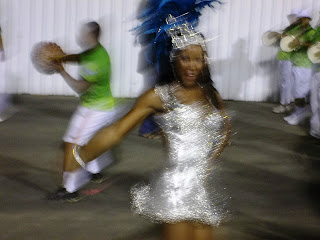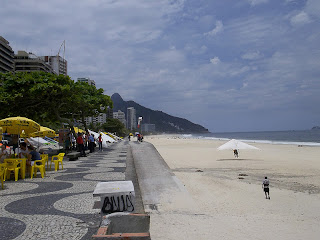Pic 1: Gisela and Germano. We took over their entire flat with our luggage!
Germano used to live with me in London years ago, then in 2006 he spent 8 months doing a similar trip on the bike (but on a much tighter budget) from Canada to Buenos Ayres.
He is the living proof that you can travel around South America with £500 per month!!!
We have to say that their flat was incidentally in the best location ever for us:
Only 800 meters from the Buquebus gates in puerto Madero, but also very close to the 2 companies that we selected to pack our bike (Show Packet SA in Calle Carlos Calvo N1) and organise the shipping (Rio Sur Trade SRL in Calle Peru 359).
Pic 2: dropping the bike off for packing
Pic 3 and 4: The bike is boxed. See you (hopefully) in 1 month in London.
Although it is fairly easy to navigate the city centre of BA the distances can be quite taxing if, like us, you decide to walk around.
From north to south there are 7 avenidas running in parallel (Santa Fe, Cordoba, Corrientes, Rivadavia, Belgrano, Indipendencia, San Juan).
All the avenida will lead you to Puerto Madero.
The now swanky port has been entirely renovated in the nineties and now apartements here will cost around $5000 per square meter.
Pic 5: Modern buildings in puerto Madero
Pic 6: The mujer bridge by Santiago Calatrava
Running in parallel with avenida Madero is the avenida 9 de Julio, with its 16 lines is probably one of the biggest avenidas in the world.
At the junction between the 9 the Julio and Corrientes you can find BA obelisk, which marks the place where the argentinian flag was planted for the first time.
Pic 7: Obelisk in avenida 9 de Julio
No matter where you are in avenida 9 de Julio you can always spot a white tall building with 2 Evita Peron portraits.
Interestingly the portrait facing south of BA (where the poor people live) shows a smiling Evita (as she was the paladine of the poor) whereas the portrait facing north shows a menacing Evita addressing the rich people.
Pic 8: North portrait: Evita during public speaking
Pic 9: South portrait. Evita smiling to the poor
No surpirse that the famous Barrio Boca is based in the south of the city centre, just after avenida San Juan.
You can reach the Barrio with a nice ride on Bus 29.
The barrio is famous for the very colorful facades of its houses.
It is said that the poor immigrants, coming mainly from Italy, didn't have enough money to paint their houses with the same colour, therefore they would use each time whatever colour was available.
Pic 10: Colourful facades in La Boca
To be honest we believe that today no italian immigrants nor argentinians live here.
The "Caminito" has been turned into a circus for tourists where, if they could, they would sell you even the air you breath.
Pic 11: Maradona, Evita and Gardel greeting the tourists in La Boca
If you are looking for somthing a tad more real, nord of La Boca is where you can find the bohemian quarter of San Telmo.
The place is filled with nice cafes where in the evening people still dance tango and lots of antiques shops.
Pic 12: Tango dancers in San Telmo
If you ever come this way don't forget to try one of San Telmo speciality: the clerico'
Pic 13: Gisela and Elena with a jug of clerico'.
At the other side of the city centre, north of avenida Santa Fe, is where you can find the Recoleta cemetery.
Pic 14: Iglesia del Pilar next to Recoleta cemetery
Tourists like us tend to come here to see where (supposedly) Evita rests.
However the small cemetery comes with a bonus of showing off graves that are a true work of art.
Pic 15: tomb in Recoleta
Elena was kind enough to limit our inevitable shopping session in calle Florida to only few hrs.
I was then able to catch my breathe at the famous cafe' Tortoni, where even Jorge Luis Borges used to come to drink expresso.
Pic 16: Elena al cafe' Tortoni
We spent our last day in Buenos Ayres walking around the huge quarter of Palermo.
This is where you can find examples of 19 century italian architecture; it truly feels like being in Milan.
And yet there are nice modern touches like the "floralis generica", a huge mechanic flower in Nationes Unidas Square that opens up in the morning and closes in the evening.
Pic 17: posing at Floralis Generica
We couldn't leave BA without trying one last time the wonderful Argenenean parrilla.
Based in San Telmo, La Brigada restaurant, is probably the best place to go so that you can leave South America with a good taste in your mouth.
Before running to Ezeiza airport we would like to thank all the people that followed us during our trip (so far we had 6000 hit on the blog!) and supported us with their nice messages.
Thank you to old friends that gave us hospitality and the numerous new friends that we found here.
Paolo y Elena






























































